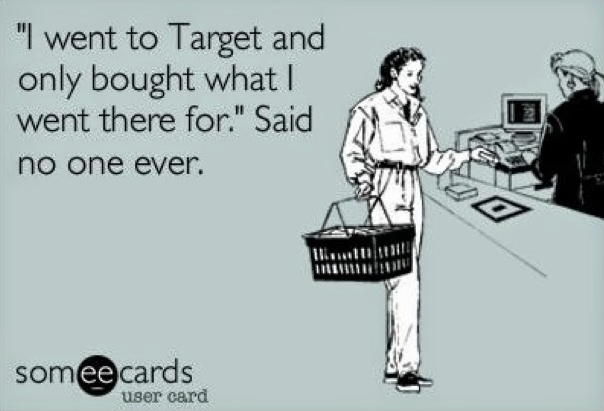I don’t remember the first item I ever bought, but I do remember the first bill I saved.
At 7 years old, my grandmother gifted my sister and I each a $100 bill—which was, at the time, more money than I could fathom. My second-grade mind flashed to the sheer amount of Barbies and mechanical pencils I could purchase with that chunk of change, but my mother had other plans—she escorted my sister and I to a local bank, where we each opened a savings account and deposited our fortunes. For the remainder of my childhood, until I turned 18, my mother had me deposit 50% of any earnings I made – from babysitting, lifeguarding, birthday money, scooping ice cream – into the savings account I had opened as a little kid.

If this were one of those “Millionaire by 25” blog posts, the trajectory of my financial success would have been predictable. I’d have bought stock at 12, begun successfully trading on the stock market in high school, and developed and sold a successful business or app in college. But it’s not, in fact, this is the opposite – because as much as my parents tried to instill in me about saving as a child, I’ve always had an Achilles heel: I love to shop, and I tried to keep up with the Jonses.
What I didn’t save as a kid, I spent— designer makeup, brand name clothes, popular shoes, junk food. By the time I got to college and joined a sorority, I was no longer restricted to mom’s inconvenient savings rule, and I’d assumed access over my bank account as a legal adult. I was responsible for paying my sorority dues and fees, which amounted to about $1,000 total a year. And though I worked part-time during semesters and summers in college, any extra income went to clothes, dresses for sorority formals, gifts for my Little during clue week, alcohol, late night WaWa snacks, summer housing rent and food, and road trips (I had a blast during college, obviously).
Junior year of college, I got my hands on my first credit card and started spending money I didn’t actually have. By the time I graduated in 2015, I was $2,000 in credit card debt before borrowing money from my parents to move across the country to Colorado for a job in higher education (read: not a lucrative job).
A year later, tired of shopping at the Dollar Store for grocery items and being constantly in debt, I jumped from education into the tech industry and moved to Arlington, Virginia. With a job that paid me enough to live, I finally felt like I had enough control over my life and finances to relax a little. But that didn’t stop me from spending—still carrying the debt of two cross-country moves, I continued to spend ridiculous amounts of money on Kate Spade bags, J. Crew, makeup I didn’t need, and unnecessary trips to Target.

When my two best friends got engaged and planned (separate) weddings a week apart and extended me the honor of being their bridesmaids, it was time to face the financial music. With the commitment of double weddings, destination bachelorette parties, bridal showers, and dress alterations, I didn’t have enough money to pay my credit card minimums, loans to my parents, and support my current Confessions of a Shopaholic lifestyle while also playing at 27 Dresses. Something had to give.
So, at $10,000 in debt last fall with minimal savings, I took on a side-hustle reading college applications part-time while also working my day job. I started saving. I opened an investment portfolio. And finally, three months ago, I paid off all my debt, plus $2,000 dollars in wedding expenses, and figured—why stop there? Why not keep saving at the rate I had been and work my way towards financial independence?
With my savings goal at 45% of my income, a 401k, a new investment tool, and this blog to keep me accountable, I’m now trying to work my way towards achieving financial freedom by age 45. Not only do I think this goal is possible, but I don’t think finance, or financial independence generally, is discussed frequently or openly enough. Especially for women.
So many young women fall into the same trap I did—spending insane amounts of money to achieve some twisted form of the modern Kardashian feminine ideal. Investing isn’t talked about enough in grade schools, in college, between mothers and daughters. Financial goals are equivocated to life goals: saving for a wedding, a honeymoon, a child. Some of the most memorable advice I’ve received from successful women in my field? “Marry for money, not for love”, given by a female executive with a wave of her sparkly left hand.
My argument is that women, given the right resources and a different social messages, can achieve individual financial independence—or at least, a high degree of financial literacy and control — without marrying rich or winning the lottery. With the rise of FinTech (financial technology) and apps including Acorns, Robinhood, and services like Betterment, financial resources are millennial-friendly and more accessible than they have ever been. By putting aside small amounts of money over time, twenty-something women can be financially empowered to achieve goals and milestones that really matter to them– not things they’re told should matter (hello, Coach shoes I bought to impress my friends).
With this blog, I plan to elaborate on my financial goals and progress, the power of investing and investment strategy, the value of compounding interest, living more frugally, and the establishment of credit. My hope is that I can start a conversation, if not nationally, then at least among my circle of friends and family.
And, with Miss (Financially) Independent as a source of external motivation and accountability, I hope to achieve my goal a little faster—retirement to the beach.


